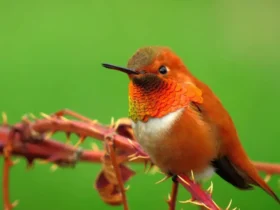In the lush rainforests and tropical woodlands of Oceania, a stunningly colorful and captivating parrot graces the treetops—the Eclectus Parrot (Eclectus roratus). With its striking sexual dimorphism, vibrant plumage, and intelligent demeanor, this enchanting bird has earned its place as one of the most sought-after and admired species in the avian kingdom. Let’s delve into the fascinating world of the Eclectus Parrot and explore the remarkable qualities that make it a true jewel of the parrot family.
Eclectus Parrot images
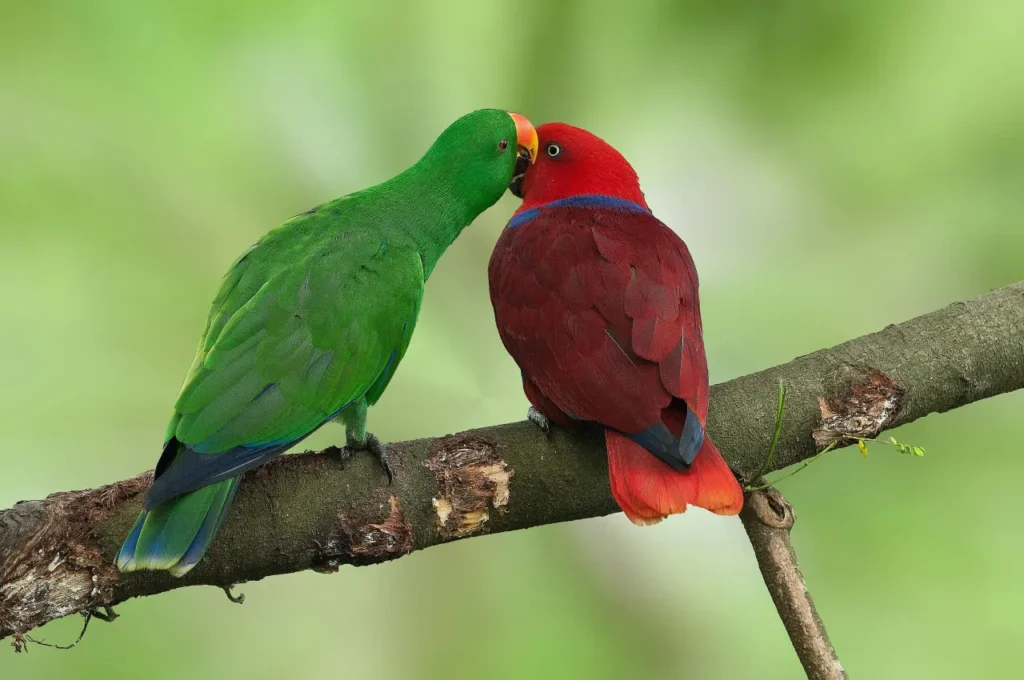
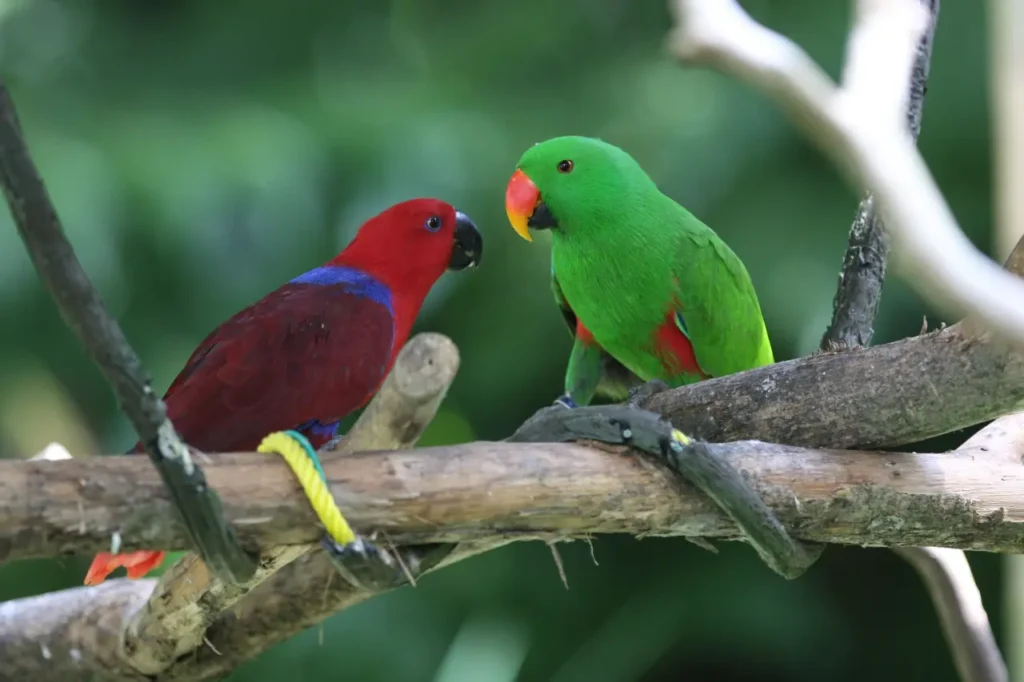
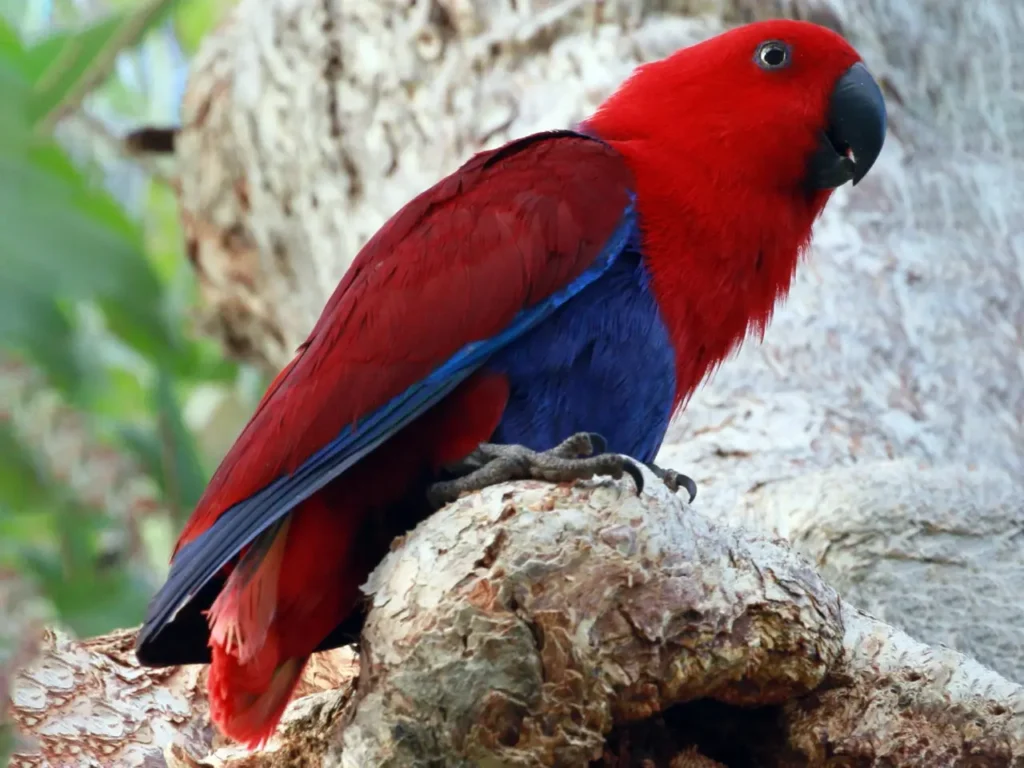

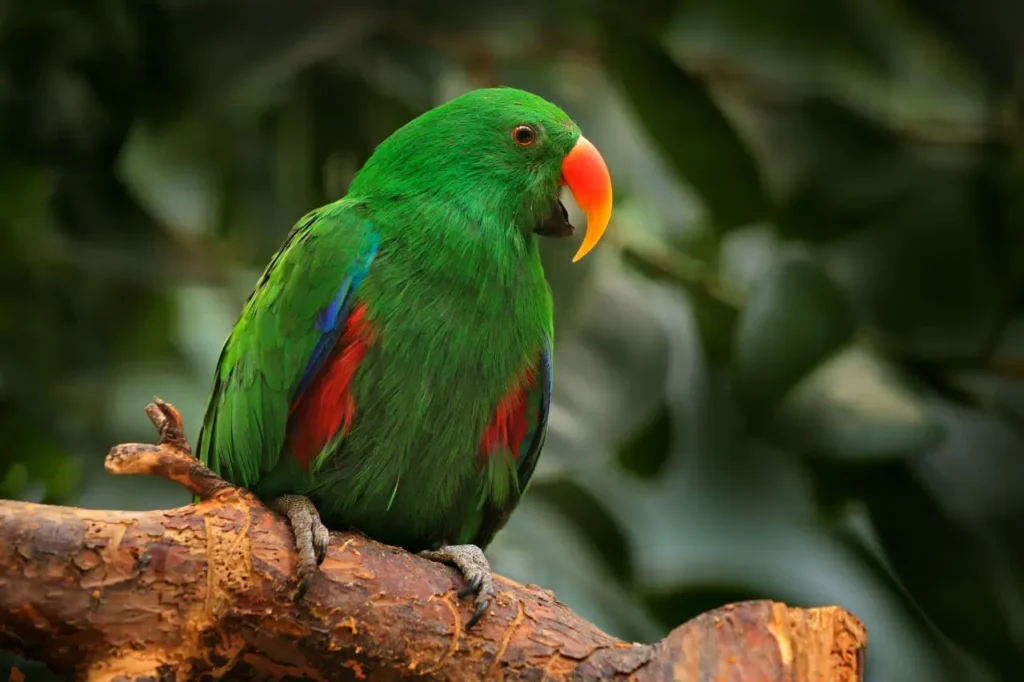
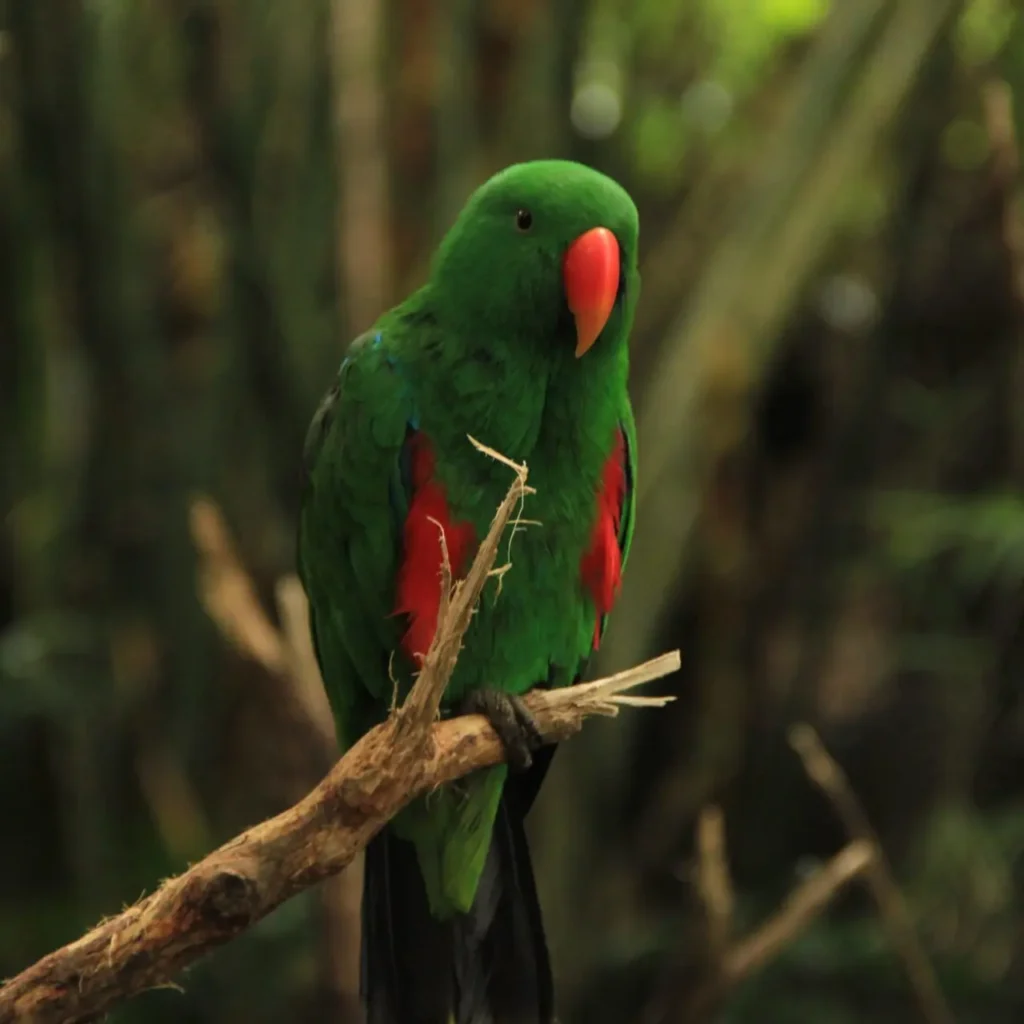


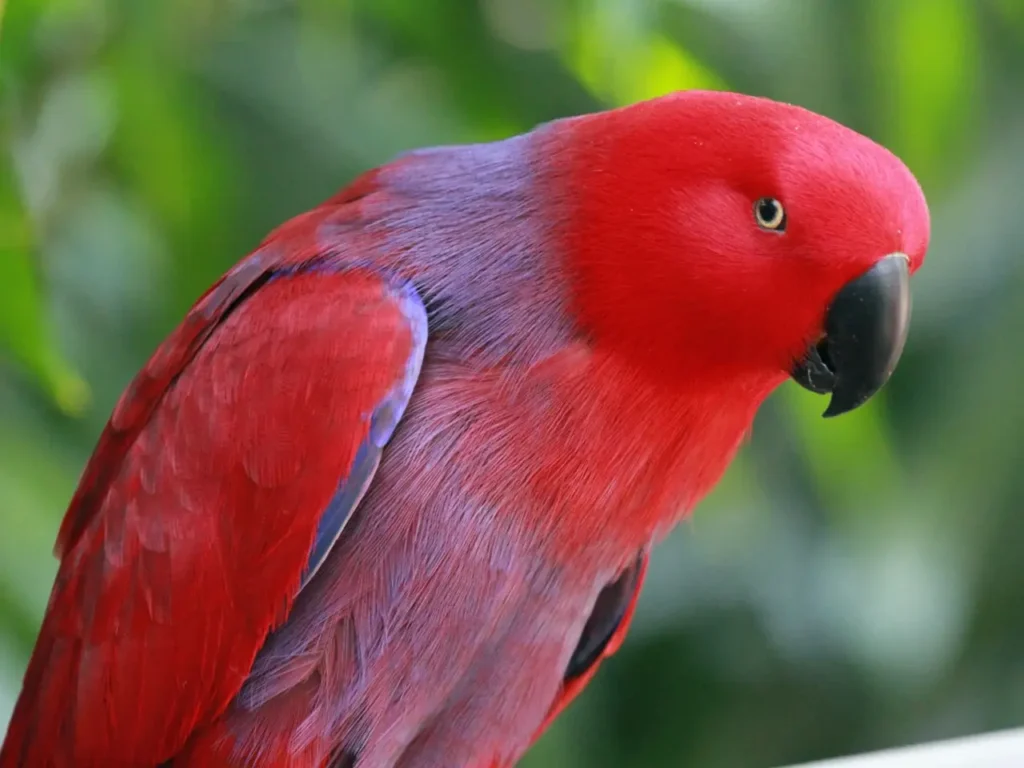
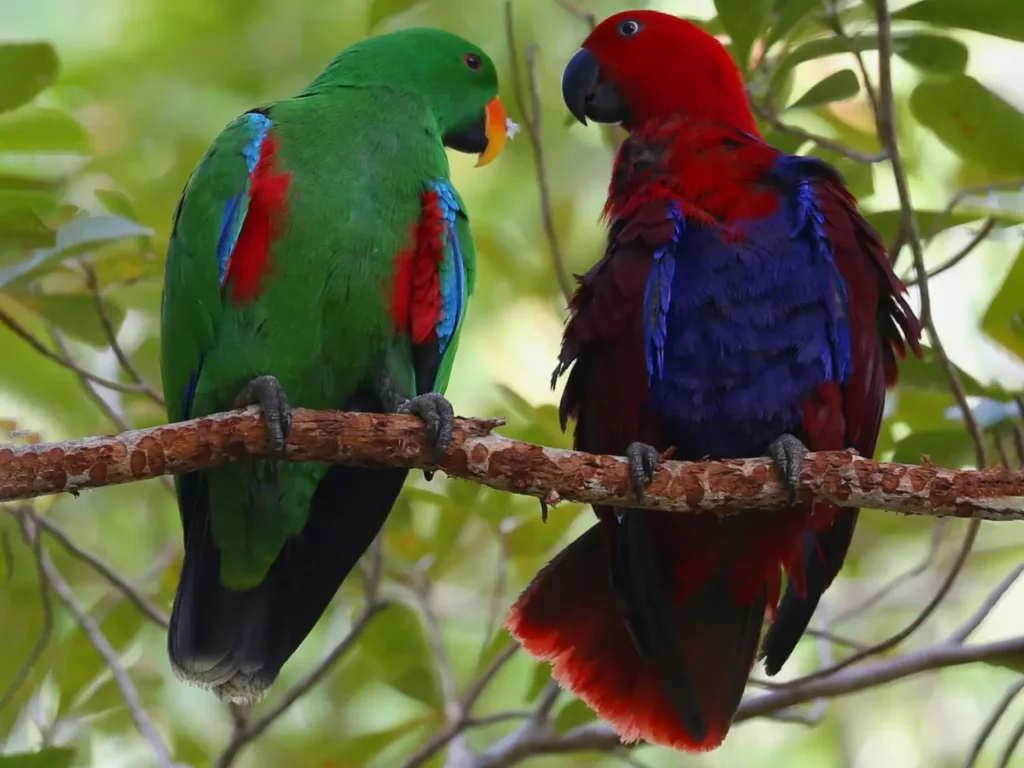
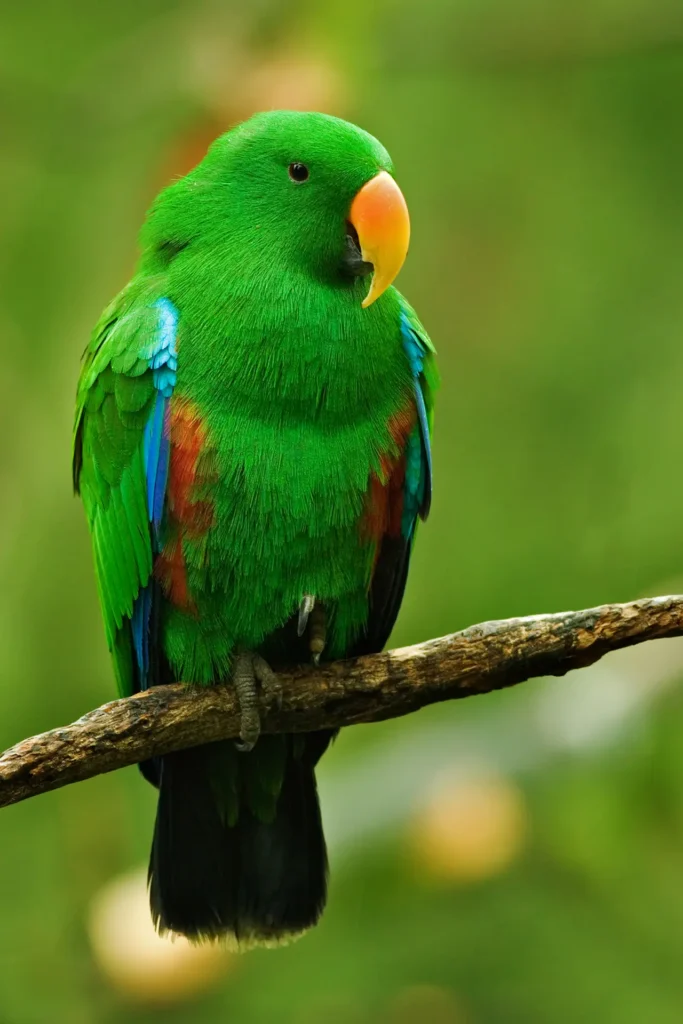
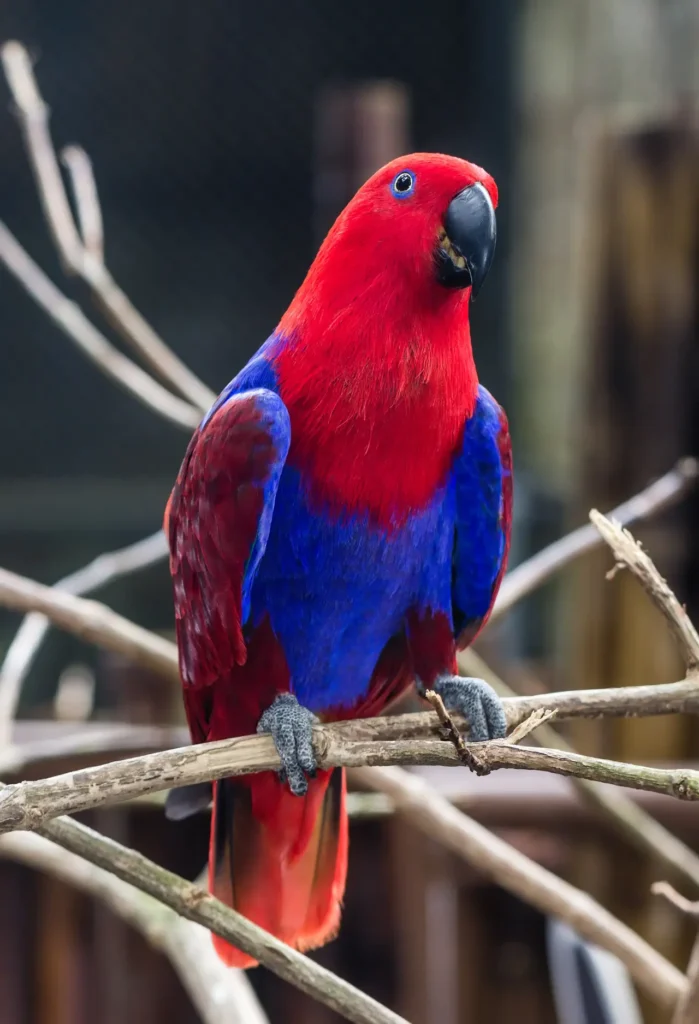
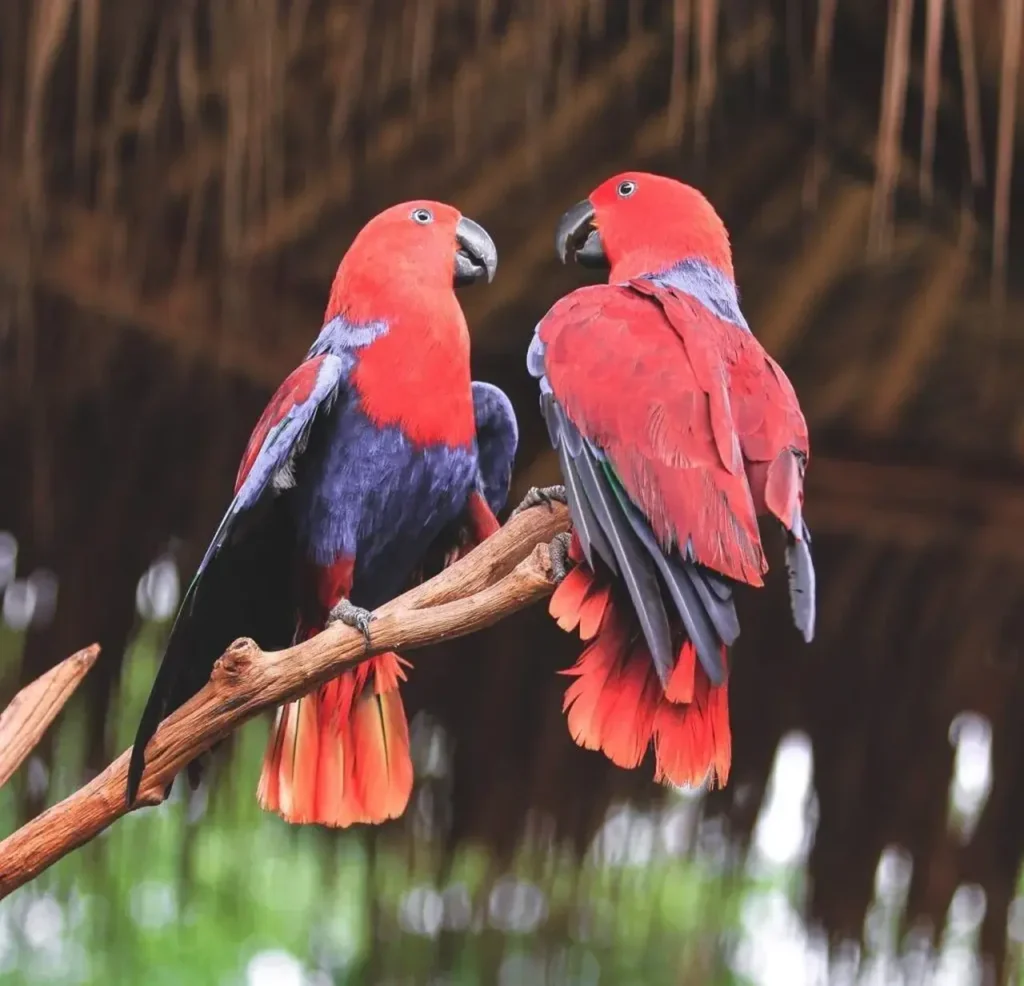
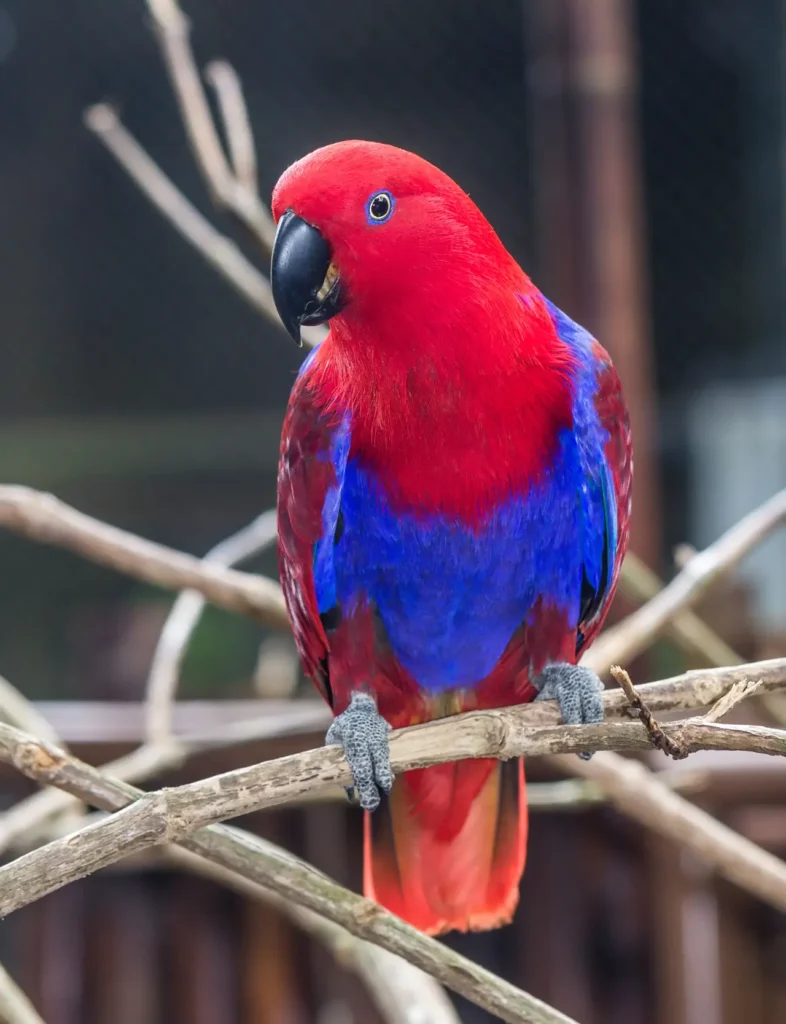
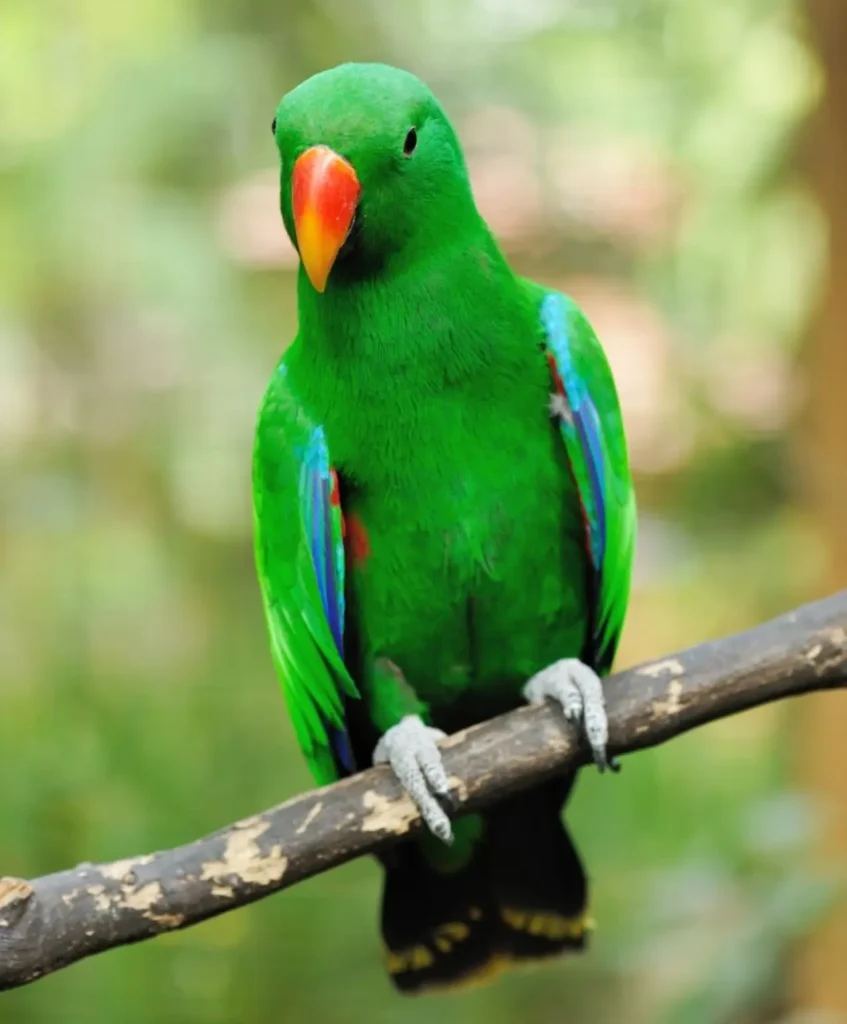
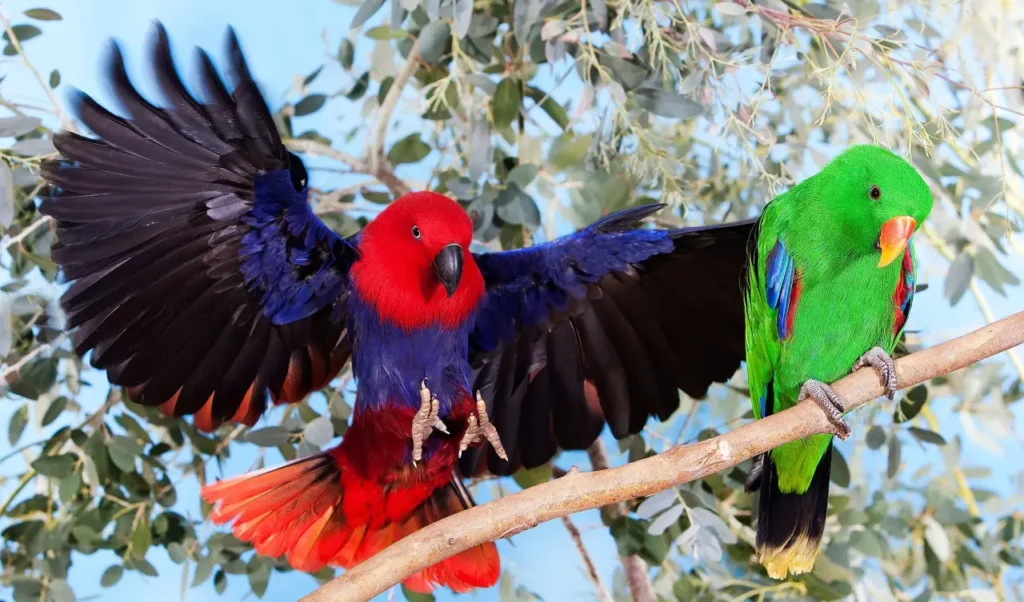
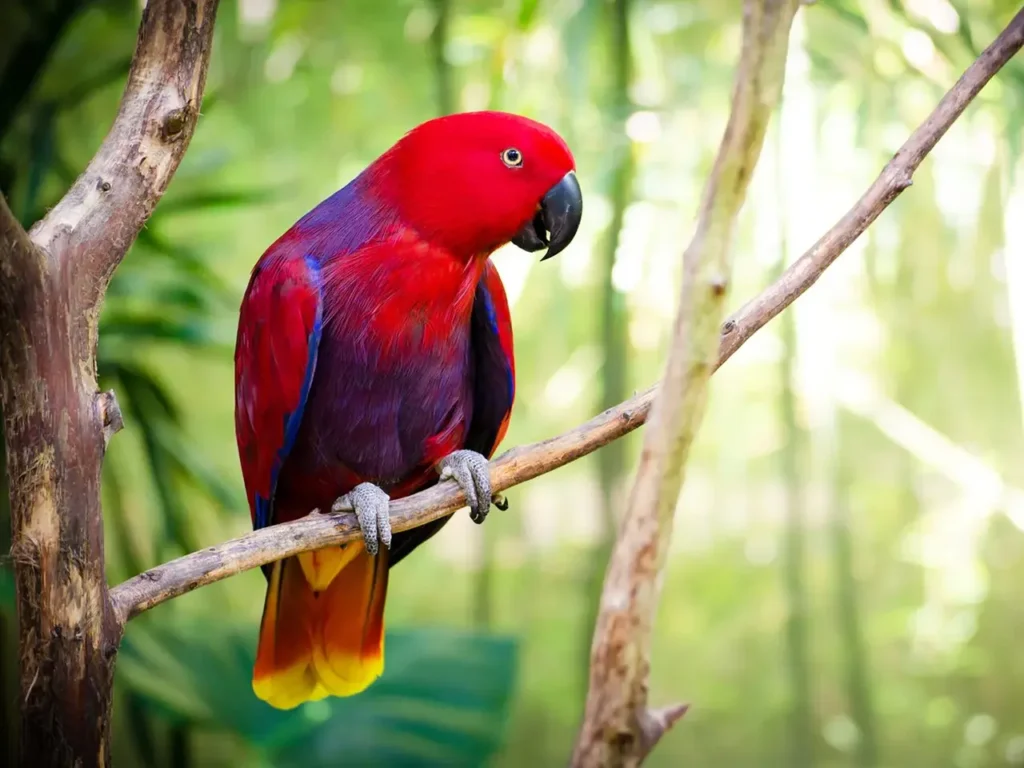
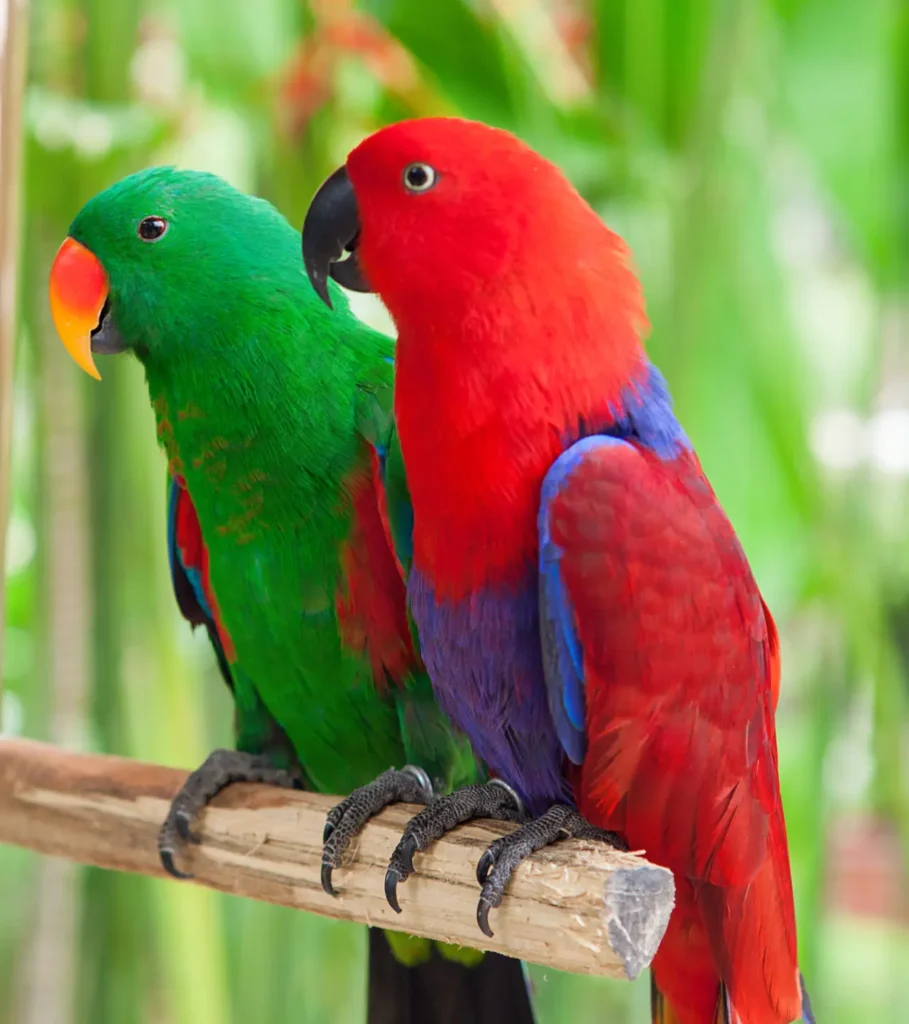
Appearance and Sexual Dimorphism
The Eclectus Parrot is renowned for its unique and striking sexual dimorphism. Unlike many other bird species, the male and female Eclectus Parrots have dramatically different appearances, often leading people to believe they are separate species.
The male Eclectus Parrot displays an exquisite emerald green plumage over its entire body, accented with bright red and blue highlights on its wing feathers. Its underparts are a vibrant yellow, creating a stunning and eye-catching contrast. The male’s beak is black and slightly curved, contributing to its overall regal appearance.
On the other hand, the female Eclectus Parrot is distinguished by its stunning red and purple plumage. Its head, neck, and chest showcase various shades of deep red, while its underparts are a rich purple hue. The female’s beak is coral red, slightly shorter and straighter than that of the male.
Habitat and Distribution
Eclectus Parrots are native to the Solomon Islands, New Guinea, and neighboring islands in Oceania. They inhabit various types of forested habitats, including rainforests, savannas, and lowland woodlands. Their preference for dense foliage and forested environments makes them well-adapted to life in the treetops, where they forage, nest, and socialize.
Diet and Foraging Behavior
Eclectus Parrots have a diverse and varied diet, consisting mainly of fruits, nuts, seeds, flowers, and some insects. Their keen sense of sight and excellent climbing abilities allow them to navigate through the treetops in search of food. The parrots’ specialized beaks are well-suited for cracking open hard nuts and seeds, making them efficient foragers in their natural habitats.
In captivity, a balanced diet of fruits, vegetables, nuts, and specially formulated pellets is essential to meet their nutritional needs and ensure their health and well-being.
Social Behavior and Intelligence
Eclectus Parrots are known for their social and intelligent nature. In the wild, they form tight-knit flocks and engage in communal activities such as foraging, roosting, and grooming. Their ability to communicate and mimic sounds adds to their appeal as companion birds, making them popular pets among bird enthusiasts.
In captivity, Eclectus Parrots require social interaction, mental stimulation, and regular flight to maintain their overall well-being. Engaging them in play, providing various toys, and offering opportunities for exploration are vital for their emotional and physical health.
Conservation Status and Protection
The Eclectus Parrot is considered a species of least concern by the International Union for Conservation of Nature (IUCN). However, like many parrot species, it faces threats related to habitat loss, deforestation, and illegal trapping for the pet trade.
Conservation efforts focus on protecting the natural habitats of the Eclectus Parrot and raising awareness about responsible pet ownership and the conservation of wild parrot populations.
A Living Jewel in the Canopy
The Eclectus Parrot, with its dazzling sexual dimorphism, vibrant plumage, and intelligent demeanor, stands as a living jewel in the treetops of Oceania. As we admire the beauty and unique qualities of this enchanting parrot, we are reminded of the diverse and extraordinary wonders that the avian world has to offer.
By valuing and protecting their natural habitats and promoting responsible pet ownership, we ensure that future generations can continue to marvel at the regal presence of the Eclectus Parrot—a true gem of the avian kingdom, adding a touch of tropical splendor to the world’s rich tapestry of wildlife.
